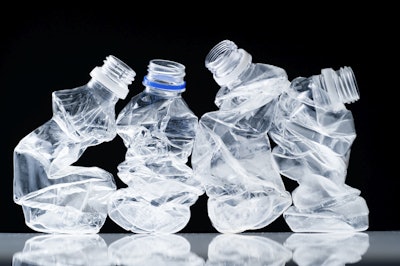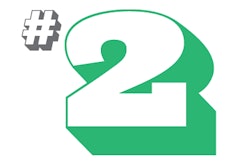
According to the “Report on Postconsumer PET Container Recycling Activity in 2017,” conducted by The National Association for PET Container Resources (NAPCOR) and The Association of Plastic Recyclers (APR), the 2017 U.S. recycling rate for PET bottles rose to 29.2%, reflecting a slight increase over the 2016 rate of 28.4%. The rate increase reflected decreases in both total collection volumes and volume of PET bottles available for recycling in the U.S.
“Demand for rPET continues to be healthy, and we have capacity and infrastructure to meet those needs,” says Tom Busard, NAPCOR Chairman, Chief Procurement Officer for Plastipak Packaging, Inc., and President of Clean Tech, Plastipak’s recycling affiliate. “However, we have more work to do to improve the quality and volume of PET that goes to our reclaimers.”
The recycling rate is derived by using the total volume of recycled PET material purchased by both U.S. processors (reclaimers) and export markets in 2017—1,726 million lb—taken as a percentage of the total volume of PET resin used in U.S. bottles and potentially available for recycling, 5,913 million lb. Of that 1,726 million lb collected, 1,442 million lb was purchased and processed by domestic PET reclaimers, with the balance of collected material, 283 million lb, sold to export markets, including Canada.
Export volumes continued to see a decline, with 2017 being the lowest export fraction recorded since 2004 at only 16% of total collection. The domestic market readily absorbed the bottles not exported; total postconsumer bottles recycled and used by reclaimers was supported by strong domestic demand for the material.
“The key to continued growth in the PET recycling industry is increased demand for rPET by end users, and designing bottles for recyclability. Increased utilization of rPET provides the connection to meeting Circular Economy sustainability goals announced by many consumer brands,” says Steve Alexander, APR President. “Despite challenges with increased contamination and demand markets, the rPET industry continues to demonstrate its strength in terms of consistent domestic material purchases and investment in enhanced processing capacity. The industry is superbly situated to work with all segments of the demand market to meet their sustainability challenges.”
In terms of rPET used in U.S. and Canadian end market applications, total volumes increased by over 5% to 1,574 million lb in 2017. Fiber, sheet, and thermoforms, along with the strapping market all showed growth over 2016, while rPET use in bottles saw a reduction in total pounds.
Both NAPCOR and the APR continue to work to address the industry’s ongoing challenges, with particular focus on improving quality of PET from the waste stream, reducing non-PET contamination in recycling streams, and building awareness at both industry and consumer levels of the importance of recycling PET. This is the thirteenth year that NAPCOR and APR have partnered to produce this report and the twenty third year that it’s been issued by NAPCOR in its current format.

























